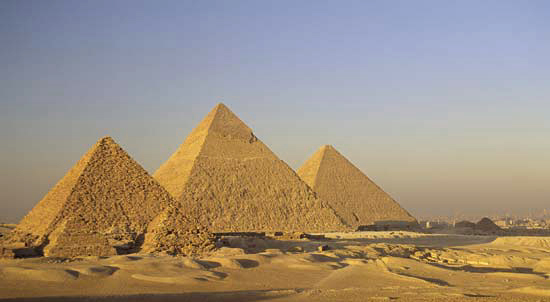
Great Pyramid of Giza
The fetters of Greece were three fortressed cities: Corinth, Chalcis, and Demetrius. The cities were heavily fortified and considered strategic sites. The Antigonids of Macedonia controlled the city-states of Greece by keeping strong garrisons at these three cities. The city of Corinth subdued the Peloponnesian Peninsula; the Phocians, Locrians and Boetians were regulated by Chalcis; and the Thessalians were dominated by the city of Demetrius. The Greek states were chained in, or shackled by these three Macedonian strongholds. Whoever occupied the cities, ruled Greece. Since the Antigonids never conquered Greece, and instead, only controlled it, suggests that it was essential to their own security and imperative that they be the power that ruled Greece.
Two of the seven wonders of the ancient world were located in Egypt: the Pharos Lighthouse at Alexandria, and the Great Pyramid of Giza. The Pharos Lighthouse was the last structure to be added to the canon of ancient wonders. The Islamic Kait Bay Fort now stands on its site. The Pharos guided sailors into the city harbor for 1,500 years and was the last of the six lost wonders to disappear. Earthquakes toppled it in the 14th century AD. Some of the material from the collapsed ruins was used to build the military fort. The Great Pyramid of Giza is the oldest of the ancient wonders, and is the only one still standing in almost complete form.

Two of the seven wonders were located in Asia Minor: the Temple of Artemis at Ephesus, and the Mausoleum at Halicarnassus. Artemis' temple or house of the soul was built to honour the goddess of hunting, nature, and fertility. The temple was made of marble and had many bronze statues. Pliny said it took more than 120 years to build and was one of the largest temples ever built in ancient times. The temple was partially destroyed by the Goths in 262 AD and completely destroyed by Saint John Chrysostom in 401 AD. Its stones were carried off and used to build other structures.
The Mausoleum at Halicarnassus was the great tomb of Carian ruler, Mausolus, who died in 353 BC. His wife, Queen Artemisia, ordered the building of the mausoleum to be constructed in honour of her husband's memory. The structure towered over everything else in the city. In Natural History, Pliny the Elder, reported that "along the south and north sides it extends for a length of 63 feet, but it is shorter on the front side, the total length of the circuit being 440 feet; the tomb is 25 cubits high and is surrounded by 36 columns. Skopas did the carving on the east side, Bryaxis on the north, Timotheos on the south, and Leochares on the west, but before they had completed the work the Queen died. They did not stop working, however, until it was complete. For above the pteron (peristyle) there is a pyramid which is equal in height to the lower part and tapers toward the top in pyramidal fashion with 24 steps; at the top there is a marble quadriga which Pytheus made. With this added, the total height of the building comes to 140 feet."
Artemisia supervised its construction until she died. After her death, the artisans continued their work until it was finished, as a monument to their own abilities and as a way to make themselves famous. The Mausoleum was gradually destroyed by a series of earthquakes over the centuries but remained in fairly good condition for sixteen centuries until a severe earthquake damaged the roof and the colonnade in the 1400s. In 1494, the Knights of St. John of Malta dismantled the tomb and used the stones to build a castle, which still stands today in Bodrum. Only the foundation remains at the original site, but some of the sculptures have survived and can be found at the British Museum in London. Several of the lion statues that circled the roof are now in museum collections. The four horses that pulled the chariot on the rooftop have also been documented, and parts of them have survived. The site was completely excavated. Columns and evidence of its foundation were found. The size and structure are reasonably well-documented.
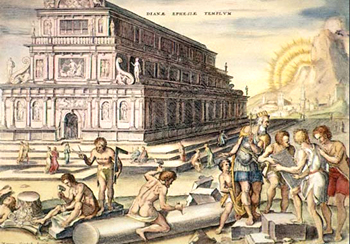 Temple of Artemis at Ephesus |
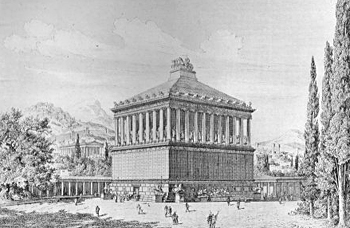 Mausoleum at Halicarnassus |
One of the ancient wonders was located on the Island of Rhodes and stood 110 feet high. Very little is known of the Colossus of Rhodes, although apparently it was toppled by an earthquake in 226 BC. It was an enormous bronze statue of their patron god, Helios. Its existence has never been proven, nor its ruins uncovered.
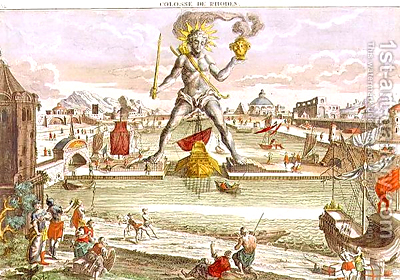
The Hanging Gardens of Babylon were designed around 600 BC by King Nebuchadnezzar II as a present to his wife, Amytis of Media, because she missed her mountainous and foliage-lush homeland. In his Geographies, Strabo reports that the gardens were quadrangular in shape and were a series of arches and terraces. The water was brought in by means of a chain pump from the nearby Euphrates River and would flow down the terraces, spreading water to all the gardens.
The last ancient wonder is the Statue of Zeus at Olympia. The statue was built by the famous Pheidias, who began working on it in 440 BC. The ivory and gold statue was over forty feet high, with a base twenty feet wide. Zeus was depicted sitting on his throne. The legs of the throne were decorated with sphinxes and winged figures of Victory. Greek gods and mythical figures also adorned the scene, including Apollo, Artemis, and Niobe's children. In Description of Greece, Pausanias, a Greek traveler who wrote the earliest guidebook to ancient Greece in 150 AD described it like this:
On his head is a sculpted wreath of olive sprays. In his right hand he holds a figure of Victory made from ivory and gold ... In his left hand, he holds a sceptre inlaid with every kind of metal, with an eagle perched on the sceptre. His sandals are made of gold, as is his robe. His garments are carved with animals and with lilies. The throne is decorated with gold, precious stones, ebony, and ivory.
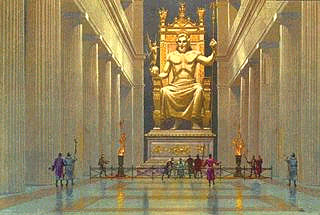
Eight hundred years after it was constructed, the statue was moved to Constantinople, but was destroyed by fire in a severe blaze that leveled most of the city in 462 AD.
The Greek States rose up in revolt soon after Alexander the Great's death. They were led by Athens, who paid mercenary soldiers to help them in their fight. Aetolia and Macedonia's old and strong ally, Thessaly, sent armies to help. Although they were relatively pleased with Philip II as their Hegemon, the Athenians, in particular, did not like being controlled by barbarians from the north. Philip had banished mercenaries and pirates from the Greek States after he had won the Battle of Chaeronea in 338 BC, and had established the Hellenic League for them. This gave Greeks relative independence, with Macedonia their supreme ruler. But Alexander had interfered with the treaty by forcing the Greek States to take back the banished mercenaries and pirates because they were causing him trouble. Antipater also began to disregard the treaty by establishing oligarchies armed with troops to suppress revolt in the city-states.

With Alexander's death, the Greeks (Athenians and their allies: Aetolians, Locrians, Phocians, and the Thessalians) decided to fight for their independence and for the revival of their sacred poleis. With Antipater in command, he and Craterus banded together to put down the rebellion. The war took place at Lamia, northwest of Athens, and was subsequently named for the site. The Lamian War began in 323 BC and ended the next year with a crushing blow to the Greek States. Antipater made generous peace treaties with many of the rebellious cities, but he took a harder line with the Athenians because they were in command of the rebel forces. Their government was dissolved and a plutocratic system, complete with garrisons of Macedonian soldiers, was established in its place. Under the new government, only those who had 2000 drachmas or more could be citizens. They also lost their autonomy and many of their liberties.
After Alexander the Great died in Babylon in 323 BC, his corpse was taken to Egypt by Ptolemy I. A massive funeral cortege was created for the mummified body for transport to Egypt, taking nearly two years to finish. The body was reportedly accompanied by Alexander's half brother, Arrhidaeus, who performed religious rites on the embalmed corpse. Alexandria was chosen by Alexander as his empire's capital and Ptolemy believed that his corpse would give the city great status. Ptolemy also wanted the body to be buried in Alexandria, in order to fulfill the prophecy of Aristander, Alexander's favourite soothsayer, who had predicted "that the country in which his body was buried would be the most prosperous in the world." By having the body lying in state, Ptolemy was given an air of prestige and legitimacy when promoting himself as the true heir of the empire. The kidnapping of Alexander's remains by Ptolemy led to a war amongst his successors, in which Perdiccas and Craterus were killed.
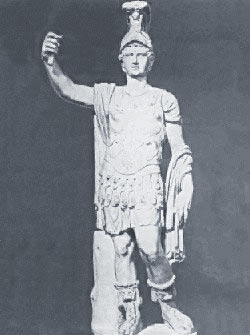
The sudden death of Alexander left his generals without any plan, and no idea how the vast territories he had conquered should be administered. Some of his followers, including the rank and file of the Macedonian army, wanted to preserve the empire. But the generals wanted to break it up and create realms for themselves. It took more than forty years of struggles and warfare (323-280 BC) before the separate kingdoms were carved out. Three major dynasties emerged: the Ptolemies in Egypt; the Seleucids in Asia, Asia Minor, and Palestine; and the Antigonids in Macedonia and Greece. These kingdoms got their names from three of Alexander's generals: Ptolemy, Seleucus, and Antigonus.
Demetrius Poliorcetes was the earliest imitator of Alexander the Great. He endeavoured to be like him in every way. He dressed, walked, and talked like Alexander, even wearing the horns of Amoun. In 306 BC, Demetrius issued a coin that said he was the son of Poseidon, which was similar to Alexander's contention that he was the son of Zeus. Demetrius even took up residence in the Parthenon in Athens, insinuating that he was Athena's younger brother. To strengthen his claim, he resurrected the Corinthian League, and was worshipped by the people of Athens.
After the Battle of Ipsus in 301 BC, Lysimachus and Epirus' King Pyrrhus united against Demetrius and took control of Macedonia from him. He was left with only his fleet. Having no remaining land base, Demetrius eventually fled to Seleucus for help, where he received refuge and a pension. Demetrius was like Alexander in another way, they both enjoyed drinking alcohol. In 283 BC, Demetrius died in exile, evidently from inactivity and an overindulgence of food and drink.
Whom did Alexander appoint as his heir?
Alexander the Great considered himself invincible, a demi-god. He was wounded many times in battle, was very sick from malaria on several occasions, and near death from various infections over the years. He had always recovered and was still a young man. Alexander had never even lost a battle. It may have never occurred to him that he could become mortally sick.
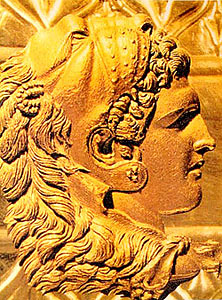
Writers of the time reported that when asked about a successor on his deathbed, Alexander's answer was "to the strongest." Some historians believed that indicated Craterus, who had already left Alexander for Macedonia with 20,000 soldiers. Diodorus wrote that Alexander reportedly left behind a will with instructions to give Perdiccas his signature ring, and therefore, the empire's power. Perdiccas might have been power hungry, but it is very unlikely that he would produce a fraudulent will to persuade Alexander's army.
At the time of his death, Alexander was King of Macedonia, Champion of the Greeks, Pharaoh of Egypt, King of Persia, King of Bactria, and King of Caria. He traveled so much and had so many responsibilities and so much good luck that it is unlikely he had made any plans in the event of his death - he was just starting. Alexander probably believed he would recover from his sickness in Babylon and would rule the world for many more years.
Philip Arrhidaeus was the son of Philip II of Macedonia and Philinna, an aristocrat from Thessaly. Arrhidaeus was Alexander the Great's older half-brother. He should have succeeded their father. Why didn't he?
Traditionally, it was said that Arrhidaeus had epilepsy and was never considered a successor. Plutarch tells us that Arrhidaeus showed so much promise as a child that Alexander's mother, Olympias, gave him drugs that caused brain damage. This doesn't seem very likely since Arrhidaeus was loved and respected by the Macedonian army and also performed many complicated religious rites. In addition, the Greeks had no compassion for feeble-minded people and certainly would never have put Arrhidaeus in charge of accompanying Alexander's body to Egypt.
After Alexander's death, Perdiccas rallied support for Arrhidaeus and hailed him as the rightful king, until Alexander's son with Roxanne was born. With Alexander IV's birth, Perdiccas constructed a dual kingdom for both of them.
Arrhidaeus married Adea Eurydiki, a fourteen year old girl who had training as a soldier. With Olympias, Roxanne, and Alexander IV on one side, and Arrhidaeus with Adea on the other, it was difficult for Perdiccas to placate both parties. Perdiccas was eventually assassinated, leaving Polyperchon as the appointed guardian in his place. Olympias managed to bring Polyperchon over to her side. He helped her lure Arrhidaeus and Adea into a trap and murdered them.
The Septuagint is the principal Greek version of the Old Testament. One legend attributes the translation of the Hebrew Scriptures into Greek to a group of seventy-two people, who finished their work in seventy-two days. But more likely, the "Seventy" were members of the Sanhedrim, who sanctioned the translation. It was said that the Greek version was made in the reign and by the order of Ptolemy Philadelphus, King of Egypt, in the city of Alexandria.
However, most modern critics claim it is the work not only of different hands, but also of different times. It is probable that only the Pentateuch was translated in Alexandria, while the remaining books were done gradually over time. It is commonly believed that the completed version was finished by the second century BC. The Septuagint is written in the Hellenistic dialect of koine, and is of great importance linguistically for its affect on the diction of the New Testament.
By writing in Greek, the Jews of Alexandria believed they could become equals with the Alexandrian Greeks. At the time, to be considered educated and worthy of recognition, one had to read and write in Greek. Also, for the Jews to spread their teachings, they had to translate them. Many Jews had forgotten their language and needed access to these works, as well.
In the Greek Church, the Septuagint enjoyed continuous use and is still a part of the canon today. It contains the Apocrypha books, and is the version out of which most of the citations in the New Testament from the Old Testament are taken.
Michael Grant calls Alexandria a curious capital because it never quite seemed to belong to Egypt. It was linked to the rest of the country by the Nile River, but people still spoke of travelling from Alexandria to Egypt, or from Egypt to Alexandria. The explanation for this might lie in the fact that Alexander the Great never intended the city to become just the capital of Egypt. He chose the location to become the capital of his empire. Alexander wasn't only building Egypt's new centre, but a commercially-oriented Greek metropolis.
With its location and the size of its harbours, Alexandria made a fortune through exporting and trading. As a result of its wealth, Egypt's capital was able to build its famous Museum and Library of Alexandria, along with fabulous palaces and temples. Scholars and intellectuals arrived in large numbers. All of these amenities attracted people from all over the Hellenistic World. Although Alexandria was the first and greatest universal city of a million inhabitants, it had largely a Greek population. Alexandrian Greeks passionately maintained their culture, had special privileges, and their own organizations. The city also hosted a large Jewish community, as well as people from many other ethnic backgrounds.
Alexandria was an entity onto itself, a magnificent city, which was quite different from any other of its time. A curious capital that became not only the largest Greek city of the time, but more than anything else, a very important centre for culture.
After putting some of his satraps to death, Alexander the Great put four of his most trusted generals in charge of certain areas of his empire. After he died, three of the generals wanted to divide the empire into separate kingdoms under their management. Seleucus, the oldest general, was governing Babylon. He was a very powerful man and satrap of the entire eastern Persian Empire. In Egypt, Ptolemy I was the satrap and acting Regent before Alexander's death. Ruling from Memphis, he wanted total control of Egypt for himself.
In Thrace, Lysimachus was satrap, who ruled on the edges of Macedonia, endeavouring to take over the country. After Antipater's death, his son Cassander did continue to support Arrhidaeus for awhile, but eventually decided to make a deal with the other generals. Cassander wanted to retain the kingship of Macedonia and the leadership of the Greek States. Seleucus, Lysimachus, and Ptolemy were also content to keep what they already controlled. It was the fourth general, Antigonus Monophthalmus and his son, Demetrius that these Separatists were to fight for years to come, trying to settle the conflict.
Demetrius, son of Antigonus Monophthalmus, was called Poliorcetes. Demetrius and his father controlled Phrygia, the Greek Islands, and ruled the Aegean Sea with their enormous fleet. Although Demetrius is listed in the Epigoni, he was really an intricate component of the Diodichi with his father. Father and son were very close and together wanted to hold Alexander's empire together after his death.
Demetrius' nickname was Poliorcetes or Besieger of Cities because he had captured so many during his conquests, cities such as Megara and Athens. He insisted on the best engineers and scientists to design bigger and better siege ships and machinery for his pleasure. His projects were on a grand scale and even his enemies were impressed by his unique structures. The "City Taker" of Rhodes was likely his greatest invention, measuring one hundred feet high with wheels that were each sixteen feet high. Thousands of men worked on the weapon, which Demetrius commissioned Epimachus to design. For almost a year, Demetrius and his army tried to capture the Island of Rhodes but his machine only caused a stalemate. Eventually, it became stuck in mud and was abandoned, later providing capital for the construction of the famous Colossus of Rhodes, one of the Seven Wonders of the World. In this case, Demetrius was unable to live up to his name.
Epicurus was a philosopher born on the Greek island of Samos, located off the coast of Asia Minor. After spending fifteen years in exile travelling from place to place, he settled in Athens. Epicurus taught his followers in "The Garden," a piece of land attached to his house. His Epicurean philosophy was the principal rival to the Stoicism of Zeno, although both were originally of the Platonic Academy.
Epicurus is most famous "as an apostle of pleasure," who taught his followers that ataraxia was the goal of life and could be attained by living a life devoid of both suffering and tumultuous desires. He believed that the world was a series of accidental combinations of atoms, and even the gods were made up of them. Epicurus believed that fear of death and fear of the gods were the two things that prevented people from having peace of mind. By removing these fears, one could find ataraxia.
Epicurus has wrongly been associated with hedonism. The word epicurean is incorrectly associated with an hedonistic devotion to the sensual pleasures of sex, food, and drink. Epicurus believed in the "absence of pain," not the procurement of every available pleasure. For example, he viewed sex as a natural desire that can help in the pursuit of peace, but believed it should be strictly controlled and remain emotionless.
The town of Vergina has been identified as Aegae, the first Macedonian capital city, and the site of its first royal residence. Vergina was known for its fabulous wealth, but today it is most famous for the number of archaeological discoveries made there, dating from 340 BC. Eight royal tombs have already been located, containing many valuable artifacts of gold and silver. However, the most important of all are the Hellenistic wall-paintings found in November 1977 by Manolis Andronikos. Hellenistic Art was a move towards realism and naturalism; a trend away from classicism. Unfortunately, very little of the original artwork has survived. The realistic mosaics of the Vergina tombs present us with an inspirational scene of the god Hades' famous mythological abduction of Persephone; a mural portrait of a young Macedonian warrior; and a mosaic, featuring a lion hunt.
 The Abduction of Persephone |
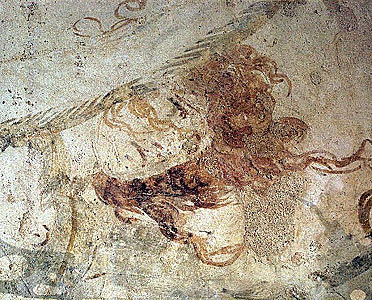 The Abduction of Persephone, detail |
The paintings are evidence of the transition from what things and people ought to look like, to a more sophisticated realistic genre. Even more recently, archaeologists working in Vergina have uncovered ivory sculptures depicting Philip II and Alexander that are anatomically accurate. These findings also seem to reinforce the belief that Hellenistic monarchs tried to outdo one another in all areas, including the building of libraries, the creation of beautiful architecture, the sponsorship of great art, and the design of elaborate royal graves and tombs.
Stoicism was one of the new philosophical movements of the Hellenistic period. Stoicism can be defined as a philosophical peace of mind, a condition of invulnerable security and tranquility, against which fate or chaos can do no harm. With the death of Alexander the Great came the Hellenistic Period, and with it, a watered-down Greekness. For the Greeks, the world was unpredictable and unstable, especially for the many living faraway in places like Babylon. The golden age of the polis was over. An overall feeling of helplessness against chance or fate prevailed. People strived to find ataraxia, and philosophers like Zeno the Stoic were in great demand to help them in their search. Although Stoicism had its roots in earlier thinkers - particularly, Heraclitus and Socrates - it originated as a distinct philosophy around 300 BC when a man by the name of Zeno (c. 336-264 BC) arrived in Athens from Cyprus.
Zeno was originally a Cynic, who left to begin his own philosophical school of Stoicism in Athens. He taught in a public hall called the Stoa Poikile or Painted Porch, from which Zeno derived his philosophy's name. As with so many ancient philosophers, very little has survived of his written works. Diogenes Laertius provides us with a very long summary of his ideas and those of other Stoics. Zeno believed that nature could be "the vehicle of world harmony," and that all things in heaven and on earth have a cosmic interchangeability. He taught that if man can accept his fate in life, then he will find ataraxia or peace of mind. Irrational feelings must be eliminated to remove human anxieties. One must be concerned only with the soul because the spiritual path can lead to the goal of apathy, and help us to accept what fate has to offer. In acceptance, there is no fear. The goal was peace of mind, achieved by living a highly virtuous life.
Stoicism had a powerfully developed system of philosophy, which incorporated logic, ethics, and physics. One central tenet of the philosophy said that the cosmos was a divine being, endowed with a soul made of a refined form of matter. Another principle taught that our role on earth was to accept and live according to nature. The Stoics also believed that we should accept our destinies unquestioningly, since they embody the will of the universe. For that reason, their name became synonymous with patience and long-suffering.
Zeno had a statue raised to him in Athens at public expense. Diogenes Laertius, in Lives of Eminent Philosophers, said the inscription, in part, read:
Whereas Zeno of Citium, son of Mnaseas, has for many years been devoted to philosophy in the city and has continued to be a man of worth in all other respects, exhorting to virtue and temperance those of the youth who came to him to be taught, directing them to what is best, affording to all in his own conduct a pattern for imitation in perfect consistency with his teaching...
Stoicism had enormous influence on Greek and Roman culture. The philosophy became popular because, like Epicureanism, it focused on questions that most people were preoccupied with, and did so practically and directly. Death, suffering, poverty, power, wealth, and slavery were subjects the Stoics discussed and they provided insight on what we all strive for: ataraxia. Stoicism remained an influential movement for five centuries.
The line of Macedonian Kings continued long after Philip II and Alexander the Great. They ruled over the Hellenized free people of Macedonia, who were enjoying life in a prosperous country. A full-time national army was a thing of the past. Instead, mostly Greek and Illyrian mercenaries made up the garrisons.
But as Philip and Alexander had found out before them, Rome was becoming a force to reckon with. Philip V of Macedonia fought the First Macedonian War (215-205 BC) against Rome and also the Second Macedonian War (200-197 BC), which was the result of Philip V trying to expand his empire along the coast of Asia Minor. Pergamum and Rhodes won the war against Macedonia with help from the Romans.
Twenty-five years later, while Philip V's son, Perseus was ruling Macedonia, more military moves were made against Pergamum. Eumenes II Soter of Pergamum made an appeal to Rome for assistance against the hostilities and this led to the Third Macedonian War (171-168 BC). After three years of sporadic fighting, the climax was reached on the Macedonian coast at Pydna on June 22, 168 BC.
Perseus and his army were crushed by the Romans at Pydna. The battle abruptly ended Macedonian rule altogether, with Macedonia becoming the first Hellenistic Kingdom to come under Roman power. The Romans then converted the kingdom into four weak republics, ending the freedom of its people. Twenty years later, the republics were abolished and annexed into a Roman province. Perseus is known as the last legitimate Macedonian king.
The Chaldeans were priests from a land in the Tigris and Euphrates valley called Chaldea. The Chaldean priests were very influential, using the planets and the twelve signs of the Zodiac to predict the future. These astrological seers used a person's birthday and exact time of birth to work out individual horoscopes.
As Alexander the Great moved eastward and thousands of Greeks began to settle in foreign places, there was a move away from the worship of the Olympian gods toward a more individualized search for peace of mind. Thus began the Greeks' fascination with the worship of stars and astrology. They hoped that the predictions made by prophets like Berossus could really forecast their destiny, as well as give instructions on "how to outwit what had been destined" for them.
This Chaldean influence on the Greeks provided excitement and a feeling of control over their own lives. Their interest in astrology led the Greeks into the more scientific study of astronomy, in which they made considerable advances of calculation, leading to new fields of mathematics. The Greeks were known as a race of people who adopted ideas from other cultures, and adapted them to further their own interests. This is evident in the case of the Chaldeans.
Theocritus of Syracuse was speaking of Ptolemy I when he said that "Lagus' son boldly achieved such grand schemes as no man but he could have thought of." The Hellenistic Monarchs were very wealthy and they usually did one of three things with surplus cash: they spent it on a public structure like a library; stored it in vaults; or they gave it to one the cultural arts, sciences, or to a poet such as Theocritus.
Kings like Ptolemy I were always in competition with each other and wanted poets in their courts to write propaganda for them. They were quite willing to pay a lot of money for the patronage. Theocritus was brought to live in Alexandria, supported by Ptolemy I, but primarily by Ptolemy II, who had become even wealthier than his father.
Patronage was garnered through flattery and by comparing the kings and even the kings' wives to gods such as Zeus and Hera. Political conquests and battles were also celebrated in court poems. After Ptolemy II had put down uprisings in the area around Caria, Theocritus wrote his Encomium of Ptolemy to commemorate it. The monarchs had the resources, and the poets, artists, and scientists needed them to further their work.
When he died, Alexander the Great left behind a fairly organized empire with Antipater as his Regent in Macedonia. Antipater was given immense respect because of his legendary expeditions, and should have become Alexander's successor. But Perdiccas was the senior cavalry officer and a leading candidate for taking over the empire. He was the Regent of the East, but being an aristocrat, was not well liked by the infantry. Perdiccas did not have enough support for himself, so he decided to rally for Philip II's son, Arrhidaeus, and heralded him as the rightful king until Alexander IV was born. Perdiccas then constructed a dual kingdom for them, but was later assassinated, possibly by Olympias, who wanted her grandson to be the sole heir.
Antigonus Monophthalmus had a higher position than the other generals because he was the Satrap of Phrygia and controlled the entire coast of Asia Minor and the Aegean Sea with his fleet. The other generals were content with carving up the empire: Seleucus was the Satrap of the entire eastern Persian Empire; Lysimachus was the Satrap of Thrace, and Ptolemy controlled Egypt. But Antigonus Monophthalmus and his son Demetrius objected. Antigonus wanted to hold the empire together and become King of the world. The generals fought each other for many years. The war between the Separatists, and Antigonus Monophthalmus and Demetrius, raged on until the final showdown at the Battle of Ipsus in 301 BC. Antigonus was killed and Demetrius was left with only the fleet. The Battle of Ipsus was an extremely important turning point in history because nobody ever tried to reconstruct Alexander the Great's Empire after it.
The Spartan Revolutions of the late 3rd century BC failed because the leaders were weak and "backward looking." King Agis IV was only one of many who believed that the land allotments advocated by the mythological Lycurgus, and the very rigid training of the agoge, should be reviewed to bring Sparta back to its "golden age." The Spartan King Areus had lifted the ban on a money-based economy and change came quickly. Compulsory initiation into the ancient system of training ended, and Sparta began using the Hellenized koine dialect. But more importantly, the equal land allotments were abandoned and the citizens had expensive mortgages to pay to the one hundred men and women who now owned all of it. Still more problematic were the numbers of people who could no longer meet the property requirements of citizenship, leaving the number of Spartiates dangerously low. These were the men who had kept the helots in check for centuries. They were now trying to make changes but the privileged few had no intention of giving up their wealth without a fight.
Beginning with King Agis IV, and continuing to 192 BC when Nabis was killed, Spartan rulers sought reform by using methods that had worked in the past. Instead of trying to create wealth and build a solid economic foundation for their poor, they were more interested in increasing their own power, in establishing a strong elite, and above all, a strong army.
The Hellenistic Period was one of increased travel. Alexander the Great had founded many Greek cities in faraway lands. As a result, Greeks were living all over the Eurasian continent and in Egypt. With the koine dialect increasingly becoming a means of universal communication, people could travel more easily. It was also a period when men like Cicero and Julius Caesar went to places like Rhodes and Athens to study at the great philosophical schools of the time.
As people traveled more, there was a demand for travel catalogues featuring the most magnificent sights of the ancient world. Philo of Byzantium and Callimachus of Cyrene both wrote such books, which were known as the Seven Wonders of the Ancient World. Many structures of the time were remarkable enough to attract visitors - places such as the Parthenon in Athens and the Palace at Knossos. The one characteristic that all the chosen wonders shared was their gigantic proportions.
Related Papers
Is There Any Chance Involved in the Evolutionary Process? A Look at Aristotle's Physics II